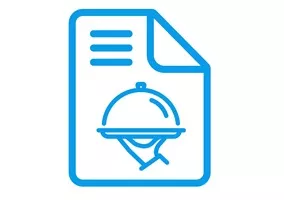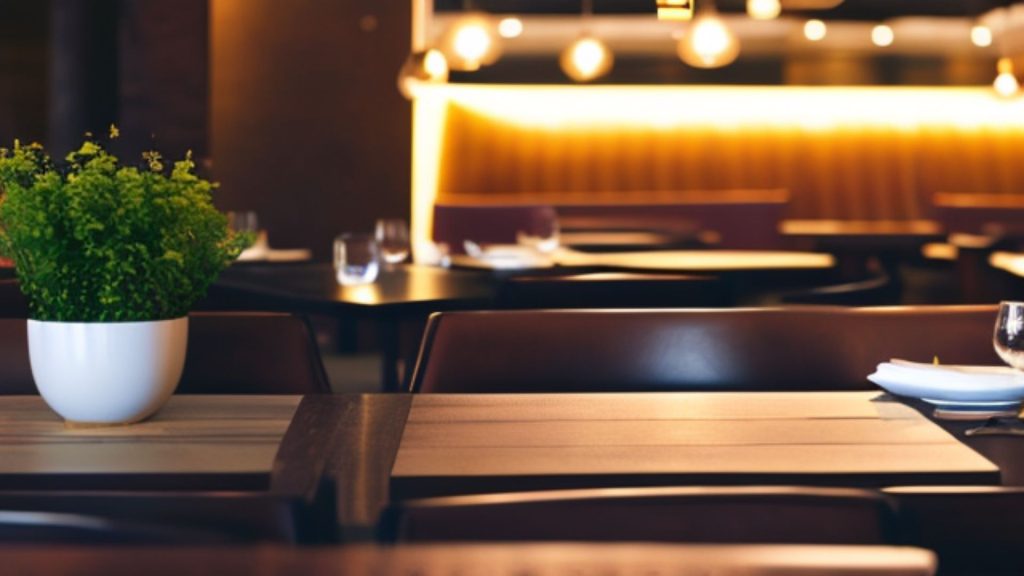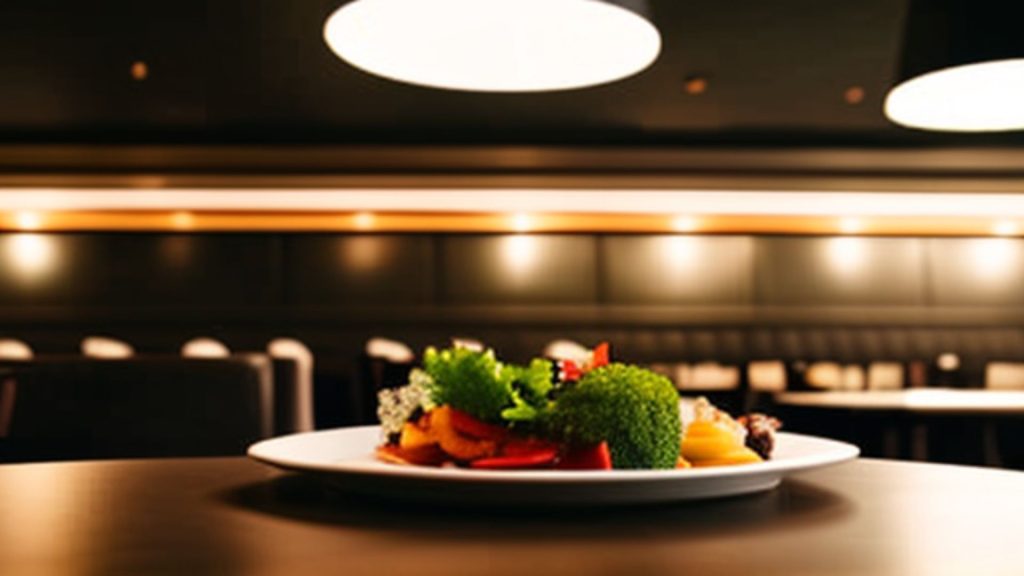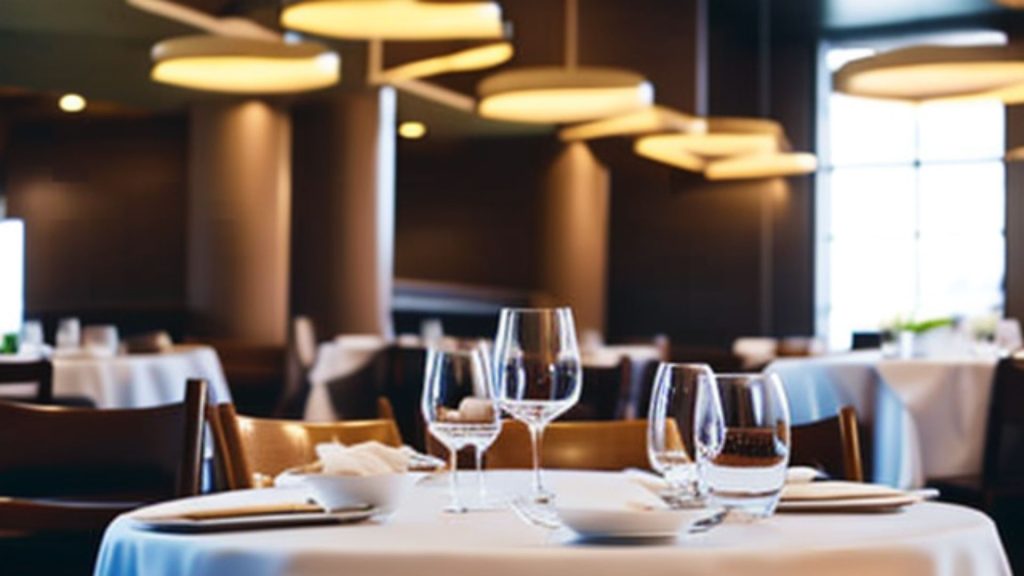Table of Content
Introduction
As a food lover and entrepreneur, the idea of opening your own eatery may seem like the perfect fit. With the restaurant industry currently experiencing a significant boom and expected to continue its upward trajectory, there has never been a better time to turn that dream into a reality.
This is evidenced by recent projections made by Datassential, a reputable market research firm based in Chicago. According to their findings, total restaurant industry sales are predicted to reach an impressive $855 billion by 2023, with a projected growth rate of 5.5% from 2022 to 2023 alone.
However, there is more to opening a restaurant than just cooking and serving delicious food.
Were you aware that according to the National Restaurant Association, around 30% of restaurants don’t succeed? The data shows that 60% of restaurants close within their first year, and 70% don’t make it to the ten-year mark, indicating that there are numerous factors to take into account before starting a restaurant.
One of the most significant reasons for restaurant failure is the location. The future also presents challenges for restaurant owners, such as labor shortages, rising costs, and competition from delivery services. To avoid becoming a part of this statistic, aspiring restaurateurs must take the necessary steps to ensure their idea is feasible and has the potential for success.
At OGSCapital, we strongly emphasize the significance of crafting a business plan and conducting a feasibility study as essential prerequisites before launching a new restaurant.
Our collection of Restaurant Business Plan templates is extensive and covers a variety of restaurant types. We invite you to explore our templates and utilize them to discover the ideal blueprint for your restaurant enterprise.
What is a restaurant feasibility study?
Thinking of opening a restaurant? That’s exciting! But before you get started, it’s important to conduct a feasibility study. What’s that, you ask?
Restaurant feasibility study is basically a deep dive into your restaurant idea to see if it’s doable and evaluate the potential success of a restaurant in a specific location.
This study involves analyzing various factors including:
- Market demand,
- Location,
- Competition,
- Target market,
- Financial projections,
to determine whether the restaurant idea is practical and sustainable.
In addition, a feasibility study for a restaurant can provide answers to a variety of questions, such as:
- Is there a demand for a restaurant in the target market?
- What are the characteristics and preferences of the target market’s demographics?
- How does the competition in the region compare, and what can you do to distinguish yourself?
- What is the most suitable location for your restaurant, and what are the advantages and disadvantages of different options?
- What are the initial and ongoing costs of running your restaurant, and what are the potential financial benefits?
- When can you anticipate breaking even, and what is the expected return on investment?
In short, a restaurant feasibility study can provide valuable insights and help you make informed decisions before investing your time, energy, and money.

Benefits of a restaurant feasibility study
Conducting a restaurant feasibility study has numerous benefits, including avoiding costly mistakes, identifying potential challenges, and boosting your restaurant’s chances of success. This table will help you understand the benefits better:
| Sr. No. | Aspect | Key items covered | Benefits of a Restaurant Feasibility Study |
| 1 | Identifying the potential market for the restaurant |
|
|
| 2 | Evaluating the competition in the area |
|
|
| 3 | Assessing the financial viability of the restaurant |
|
|
| 4 | Identifying the most effective marketing strategies |
|
|
| 5 | Analyzing the regulatory and legal requirements for starting a restaurant |
|
|
| 6 | Estimating the initial start-up costs and ongoing expenses of the restaurant |
|
|
| 7 | Assessing the potential risks and challenges associated with the restaurant |
|
|
Structure of feasibility study for restaurant
A feasibility study of a restaurant includes a detailed study of the market demand, competition, location, financial projections, operational requirements, legal compliance, and technological needs of your restaurant business. Let’s take a closer look at each of these components:
1. Market Analysis: Understanding your customers and competition
The first step in a feasibility study is to evaluate the local market demand for your restaurant. You can understand your market by answering questions like:
- Are there enough potential customers in the area?
- What are their preferences and needs?
- Who are your competitors, and how can you differentiate yourself from them?
By doing so, you can determine if there is a market for your restaurant concept and how you can differentiate yourself from the competition. Conduct market research surveys, focus groups, and other data collection techniques to gain insights into the market demand.

2. Location Analysis: Finding the right spot for your restaurant
Once you’ve identified your target market, it’s time to find the perfect location for your restaurant. The location of your restaurant is a critical factor in determining the success of a restaurant.
A good location is:
- Visible
- Accessible
- Inviting
- Has ample foot traffic and parking.
You’ll also need to consider zoning laws, building codes, and other legal requirements. With the right location, you’ll be able to attract more customers and increase your revenue.
3. Financial Analysis: Assessing the financial viability of your restaurant idea
Let’s talk about money! Running a restaurant is a business, and you’ll need to create a financial plan to ensure its success.
A financial analysis should cover:
- Start-up costs
- Ongoing expenses
- Revenue projections
- Cash flow projection
- Expected return on investment.
By forecasting your financials, you’ll be able to estimate your profitability and plan for contingencies.
4. Operational Analysis: Planning for efficient operations
The operational analysis component of a feasibility study is all about planning for the smooth and efficient day-to-day operations of your restaurant.
Consider the various resources required to run your restaurant, including:
- Staffing
- Equipment
- Supplies
- Inventory management.
Conducting an operational analysis can help you determine the ideal staffing levels for your restaurant, select the proper equipment to purchase or lease, and set up supply chains to maintain consistent food quality. By analyzing the workings of your restaurant, you can identify the necessary resources for successful operations.
5. Legal Analysis: Complying with regulations and requirements
Operating a restaurant requires compliance with numerous laws and regulations, such as:
- Obtaining the necessary licenses and permits
- Adhering to health and safety regulations
- Following zoning laws and fulfilling tax obligations
Conducting research on the legal requirements for your restaurant and ensuring that you comply with all applicable laws and regulations is crucial. Performing a legal analysis can help you ensure that your restaurant is operating within the law and avoid potential legal issues in the future.
6. Technical Analysis: Leveraging technology to enhance customer experience
Finally, you need to consider the technology and software needs for your restaurant. Consider
- Point-of-sale systems
- Reservation systems
- Online ordering platforms
- Other technologies that can help streamline your operations and enhance the customer experience.
Ultimately, the goal of a technical analysis is to identify the technology solutions that will best serve your restaurant’s needs, while also meeting the needs and preferences of your customers.
Process of conducting a restaurant feasibility study
[important title=”Note”]A well researched feasibility study is extremely important to make an informed decision about your restaurant. Here are the steps involved in conducting a successful feasibility study for a new restaurant:[/important]
Step 1: Defining the Feasibility Study’s scope
The first step in performing a feasibility study for a restaurant is to establish the study’s scope. This involves defining your restaurant’s concept, target market, budget, and timeline. Establishing the scope of your study will assist you in determining what you need to accomplish and the resources you’ll require to do so.
For example, do you plan to open a fast food restaurant, a fine dining establishment, or a food truck? Who is your target audience? What is your budget and timeline for opening the restaurant? Answering these questions will provide you with a clear understanding of your study’s scope and what you need to achieve.

Step 2: Perform initial research
Before starting a feasibility study, it’s essential to conduct initial research to comprehend the market. You can gather information on industry trends, consumer preferences, eating habits, and pricing from a variety of sources, including market reports, government databases, and trade associations.
For example, you could research the market’s size, the number of competitors, the types of cuisine that are popular in the region, and the pricing strategies that other restaurants are utilizing. This information will help you understand the market and identify potential opportunities and obstacles.
Step 3: Analyze the market and competition
After conducting preliminary research, it’s time to analyze the market and the competitive landscape. You should identify your competitors, their strengths and weaknesses, and the tactics they use to attract customers. You should also identify the size of the market and the potential for growth.
For example, you could identify the types of restaurants in the region, the number of customers they serve, and the types of cuisine they offer. You could also identify each restaurant’s strengths and weaknesses, such as their menu, pricing, location, and customer service. By evaluating the market and the competition, you can identify your unique selling proposition (USP) and distinguish your restaurant from others in the area.
Step 4: Perform a SWOT Analysis
A SWOT analysis is a valuable strategy tool used to evaluate the strengths, weaknesses, opportunities, and threats of your restaurant. This step requires identifying the internal and external factors that may impact your restaurant’s success.
For example, it is important to identify the strengths of your restaurant, such as a distinctive menu, a prime location, and skilled staff. In addition, it is necessary to identify any weaknesses, such as lack of brand recognition, high overhead costs, or a restricted marketing budget.
Step 5: Develop a concept and business plan
In this step, you should develop a comprehensive restaurant business plan that outlines your restaurant’s concept, mission statement, target audience, marketing strategy, menu, pricing, staffing, and financial plan. You should also determine the location of the restaurant and the design of the premises.
For example, you can develop a concept that emphasizes fresh, locally sourced ingredients, or a mission statement that emphasizes sustainability and community engagement. You can identify your target audience, such as families with young children, or busy professionals. You can also develop a marketing strategy that emphasizes social media, print advertising, or word-of-mouth referrals.

Step 6: Perform a Financial Analysis
This step requires conducting a financial analysis to assess the viability of your restaurant. To do so, you’ll need to create a comprehensive financial plan that includes anticipated revenue and expenses, as well as a break-even analysis and a return on investment (ROI) analysis.
For example, you should create a projected income statement that includes your sales, cost of goods sold, labor costs, overhead costs, and net income. You should also calculate your break-even point, which is the number of customers you need to break even. Additionally, you should calculate your ROI, which is the return on your investment over a specific period.
Step 7: Analyze results and prepare a recommendations report
Upon completion of the previous steps, it is time to assess the results of your feasibility study and develop a report with recommendations. The report should provide a summary of your findings, including your suggestions for advancing with the restaurant.
For example, your report should summarize the market research, competitive analysis, SWOT analysis, concept and business plan, technical and legal requirements, and financial analysis. It should also include your recommendations for location, menu, pricing, staffing, marketing, and overall strategy. Additionally, you should include a timeline for opening the restaurant, as well as an estimate of the total cost of the project.
By following these steps and conducting meticulous research, analysis, and planning, one can boost their chances of success and avoid potential obstacles.
Unlock the secrets to a successful restaurant: Let OGSCapital create your custom Restaurant Feasibility Study
Welcome to OGSCapital! We specialize in providing high-quality feasibility study solutions for businesses, including those in the hospitality industry. If you’re planning to open a restaurant and need guidance on its feasibility, we’ve got you covered. Our team of experts has a deep understanding in preparing feasibility study for hotel and restaurant management industry and can provide you with the tools and information you need to make informed decisions about your project.
We have completed numerous feasibility studies for restaurants and can provide you with an example of a feasibility study for a restaurant on demand. We’ll help you analyze the market and competitive landscape, develop a concept and business plan, and conduct a financial analysis to help you make informed decisions about your restaurant venture.
Our comprehensive feasibility study for a restaurant covers all essential elements needed for a successful restaurant venture. We have a feasibility study template for a restaurant that is designed to guide you through the process of conducting a thorough analysis of your market and competition, identifying your target market, and developing a sound business plan.
We understand that gathering data through a sample questionnaire for restaurant feasibility study is critical. Our team will work with you every step of the way to ensure that your feasibility study for hotel and restaurant management is technically, financially, legally, and operationally feasible. With our expertise and attention to detail, you can trust that we will provide you with the information you need to ensure your restaurant venture is a success.
Contact us today to learn more about our feasibility study services and how we can help you unlock the potential of your next hospitality project.
FAQ
1. What is an example of a feasibility study?
A few examples of a feasibility study could be:
- Construction feasibility study to determine if a proposed building project is feasible in terms of costs, design, and construction timeline,
- Financial feasibility study to determine the viability of a business venture,
- Hotel feasibility study to determine the potential success of a proposed hotel,
- Real estate feasibility study to assess the profitability of a property development project.
You can find more information on feasibility study here.
2. What is the most important part of a feasibility study?
The most crucial aspect of a feasibility study is the assessment of the project’s viability, including technical, financial, legal, operational, and market feasibility. A thorough evaluation of these factors can determine whether the project is worth pursuing and can yield the expected returns on investment.
If you need a professional feasibility study for your project, please do not hesitate to contact us at OGSCapital. Our team of experts can provide you with a comprehensive and customized feasibility study report to help you make an informed decision.
OGSCapital’s team has assisted thousands of entrepreneurs with top-rate business plan development, consultancy and analysis. They’ve helped thousands of SME owners secure more than $1.5 billion in funding, and they can do the same for you.



















